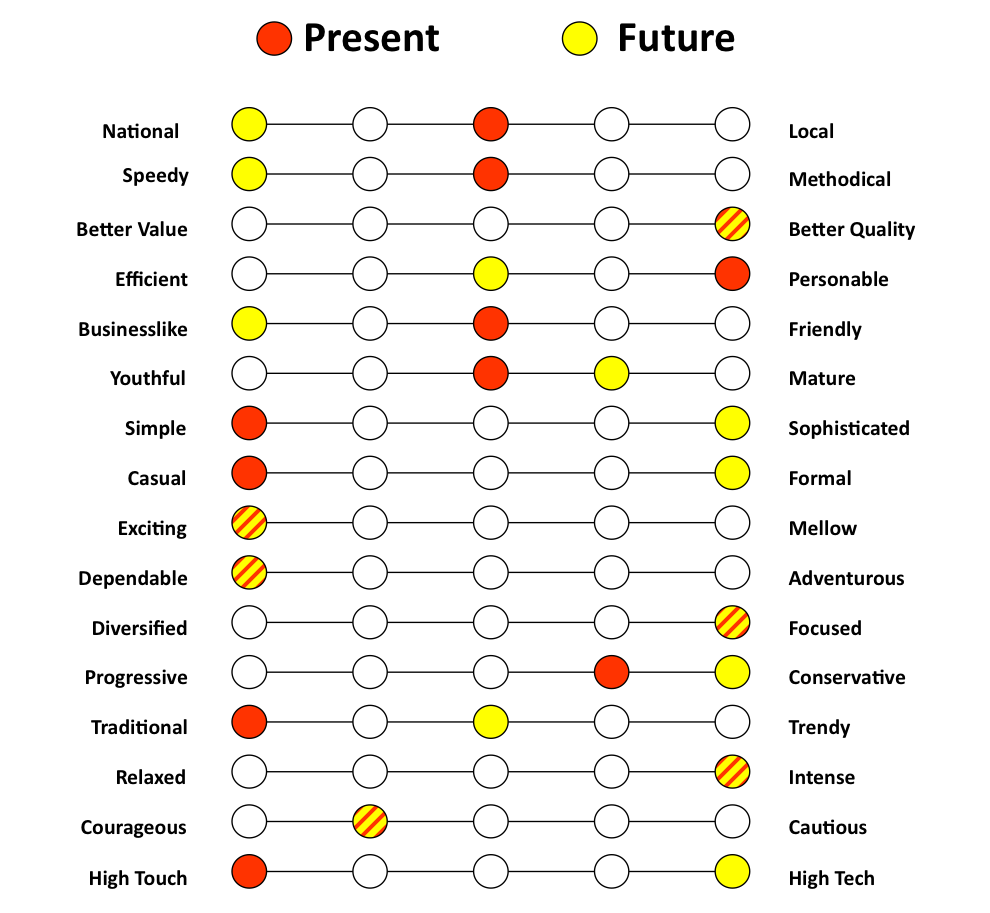Graphing
aka “how to make sense(visually) of the environment/context in which your brand will live”

1. STYLES
Based on the reading MARKETING_AESTHETICS.pdf , graph the positioning of your organization based on dimensions of style. These dimensions of style are generated through actual expressions.
Make graphs that position the company and its competitors in a continuum according to their stylistic gestures:
• complexity (minimal vs. ornamental)
• representation (real vs. abstract)
• perceived movement (dynamic vs. static)
• potency (loud/strong vs. strong/weak)
Graph each pair of stylistic attributes on a single axis continuum.
On the graph include your organization and 5 to 10 competitors.
Graph the CURRENT expressions as the organization is today and where you think it should be in the FUTURE.
2. IMPRESSIONS
Graph the positioning of your organization based on perceptions that are created by formal elements, styles and themes. These impressions are based on integrations, inferences and attitudes.
Make graphs that position the company and its competitors in a continuum according to their representations:
• time (traditional, contemporary, futuristic)
• time movement (retro vs. avant-gard)
• space (east vs. west)
• technology (high–tech vs. handmade)
• authenticity (original vs. imitative)
• sophistication (cheap vs. luxurious)
• scale (global vs. regional)
Graph each pair of representations on a single axis continuum.
On the graph include your organization and 5 to 10 competitors.
Graph the CURRENT expressions as the organization is today and where you think it should be in the FUTURE.
3. MAKE YOUR OWN
Make a graph that positions the organization and its competitors using both the x and y axis.
Choose any two of the following representations or make up your own impressions that are based on integrations, inferences and attitudes that are appropriate to your organization.
• time (traditional, contemporary, futuristic)
• time movement (retro vs. avant-gard)
• space (east vs. west)
• technology (high–tech vs. handmade)
• authenticity (original vs. imitative)
• sophistication (cheap vs. luxurious)
• scale (global vs. regional)
On the graph include your organization and as many competitors as relevant. Graph the CURRENT expressions as the organization is today and where you think it should be in the FUTURE.
… … … … … … … … … … … … … … … … . .
4. Semantic Differential Graphing

The Semantic Differential Graphing exercise is an excellent tool to help align those attributes not only for today, but as importantly, where you may want to steer the organization in the future.
The Semantic Differential asks the following question: “How would you describe the personality attributes of the brand in terms of how it is perceived today versus how it should be perceived in the future?”
To Determine Opposite Attributes: The attributes above can easily serve most brands as well as the ones listed here. If you feel like other words would more accurately communicate your brand and where it sits in regards to other brands then please use words that make sense to you! Consider attributes that are opposite one another, not necessarily negative to one another.